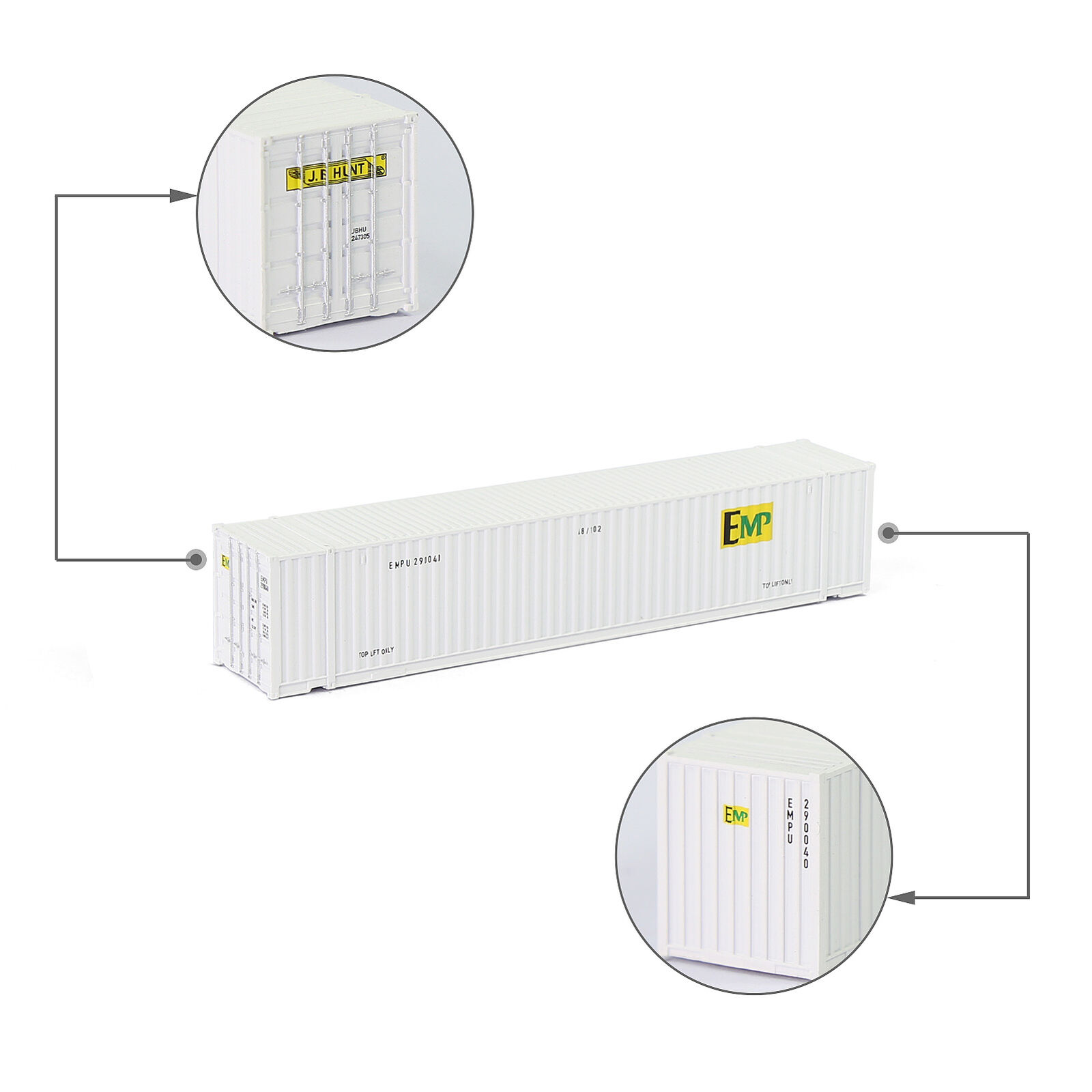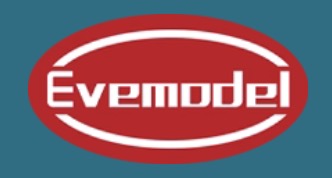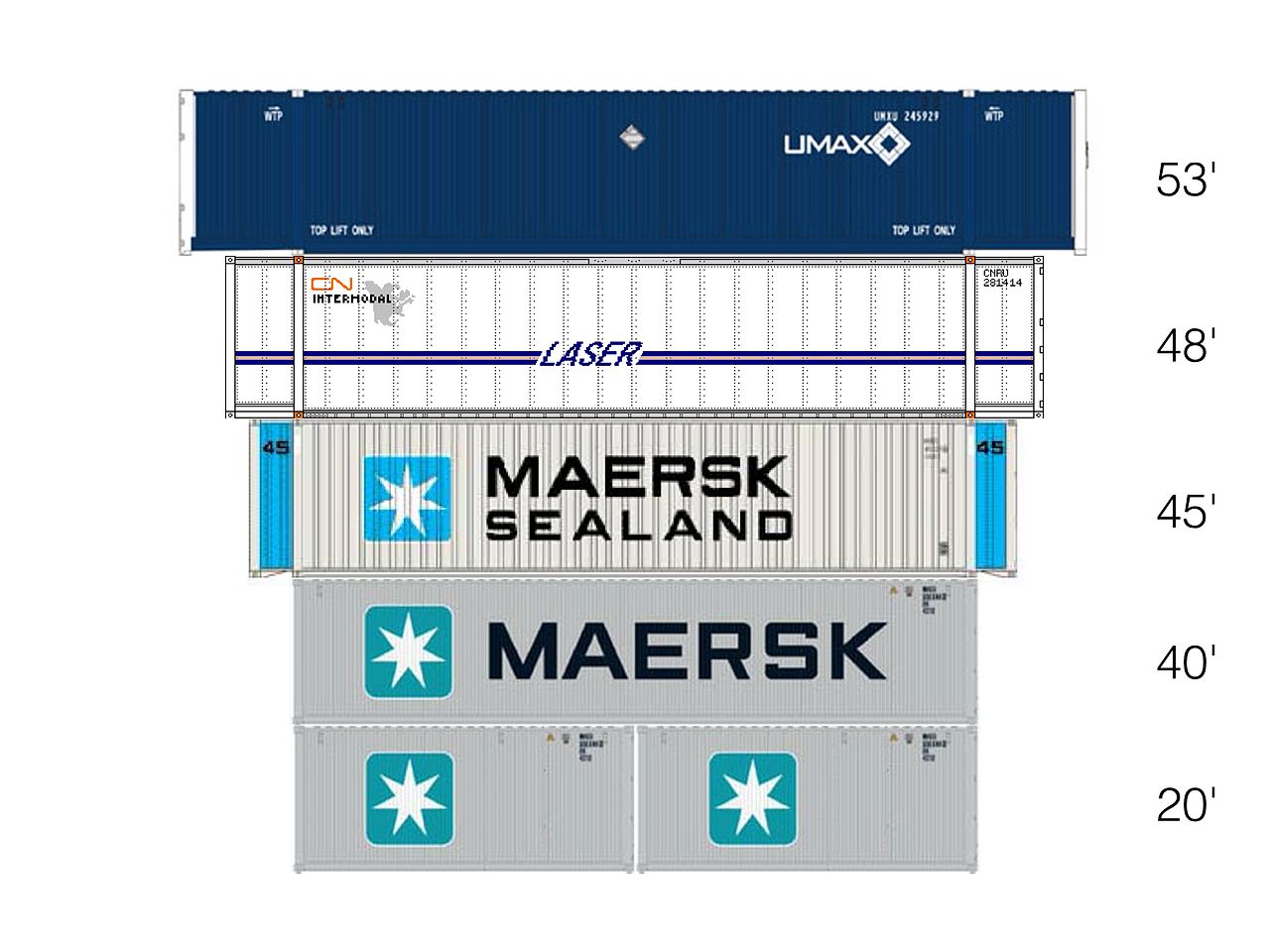Prototype History: An intermodal container is a large standardized shipping container, designed and built for intermodal freight transport, meaning these containers can be used across different modes of transport – from ship to rail to truck – without unloading and reloading their cargo. Intermodal containers are primarily used to store and transport materials and products efficiently and securely in the global containerized intermodal freight transport system, but smaller numbers are in regional use as well. These containers are known under a number of names, such as simply container, cargo or freight container, ISO container, shipping, sea or ocean container, container van or (Conex) box, sea or c can.
The 48-foot (14.63 m) shipping container is a High Cube container in that it is 9 ft 6 in (2.90 m) tall on the exterior. It is 8 ft 6 in (2.59 m) wide which makes it 6 inches (15 cm) wider than ISO-standard containers. This size was introduced by container shipping company APL in 1986, and is used domestically in North America on road and rail, and may be transported on deck by ship. This size being 8 feet (2.44 m) longer and 6 inches (15 cm) wider has 29% more volume capacity than the standard 40-ft High Cube, yet the cost to move it by truck or rail are almost the same.
From Wikipedia
The 48-foot (14.63 m) shipping container is a High Cube container in that it is 9 ft 6 in (2.90 m) tall on the exterior. It is 8 ft 6 in (2.59 m) wide which makes it 6 inches (15 cm) wider than ISO-standard containers. This size was introduced by container shipping company APL in 1986, and is used domestically in North America on road and rail, and may be transported on deck by ship. This size being 8 feet (2.44 m) longer and 6 inches (15 cm) wider has 29% more volume capacity than the standard 40-ft High Cube, yet the cost to move it by truck or rail are almost the same.
From Wikipedia
Road Name History:  EMP is a subsidiary of Norfolk Southern Railway. EMP is one of the largest service networks for intermodal domestic containers, and it is offered by Union Pacific and Norfolk Southern. Agent railroads including Canadian Pacific and Kansas City Southern also are part of the program. EMP provides customers access to an equipment fleet of more than 30,000 containers and chassis. Plus, EMP offers the flexibility to use the equipment in a dedicated assigned service or on a free-running basis as needed. Many different container sizes are available for individual loading preferences. A variety of equipment program products are provided to meet specialized requirements. Customized reports are generated with REZ-1 to help streamline the logistics process and improve container management. Ride quality is improved with 48 foot and 53 foot domestic containers (53 foot containers are available in high cube and ultra wide sizes).
EMP is a subsidiary of Norfolk Southern Railway. EMP is one of the largest service networks for intermodal domestic containers, and it is offered by Union Pacific and Norfolk Southern. Agent railroads including Canadian Pacific and Kansas City Southern also are part of the program. EMP provides customers access to an equipment fleet of more than 30,000 containers and chassis. Plus, EMP offers the flexibility to use the equipment in a dedicated assigned service or on a free-running basis as needed. Many different container sizes are available for individual loading preferences. A variety of equipment program products are provided to meet specialized requirements. Customized reports are generated with REZ-1 to help streamline the logistics process and improve container management. Ride quality is improved with 48 foot and 53 foot domestic containers (53 foot containers are available in high cube and ultra wide sizes).
EMP - (Equipment Management Pool) a domestic interline Intermodal freight transport partnership that provides shipping and logistics of containers, is owned by Union Pacific, along with Norfolk Southern Railroad and agent-owned partners Canadian National Railway, Canadian Pacific Railway, I&M Rail Link, Iowa Interstate Railroad, Wisconsin Central Ltd., and Kansas City Southern Railway. CSXI and Conrail were part of the group, at one time. EMP's fleet of more than 35,000 domestic 53-foot containers and chassis traverse major cities throughout North America.

EMP - (Equipment Management Pool) a domestic interline Intermodal freight transport partnership that provides shipping and logistics of containers, is owned by Union Pacific, along with Norfolk Southern Railroad and agent-owned partners Canadian National Railway, Canadian Pacific Railway, I&M Rail Link, Iowa Interstate Railroad, Wisconsin Central Ltd., and Kansas City Southern Railway. CSXI and Conrail were part of the group, at one time. EMP's fleet of more than 35,000 domestic 53-foot containers and chassis traverse major cities throughout North America.
Item created by: CNW400 on 2024-08-04 17:22:36
If you see errors or missing data in this entry, please feel free to log in and edit it. Anyone with a Gmail account can log in instantly.
If you see errors or missing data in this entry, please feel free to log in and edit it. Anyone with a Gmail account can log in instantly.





